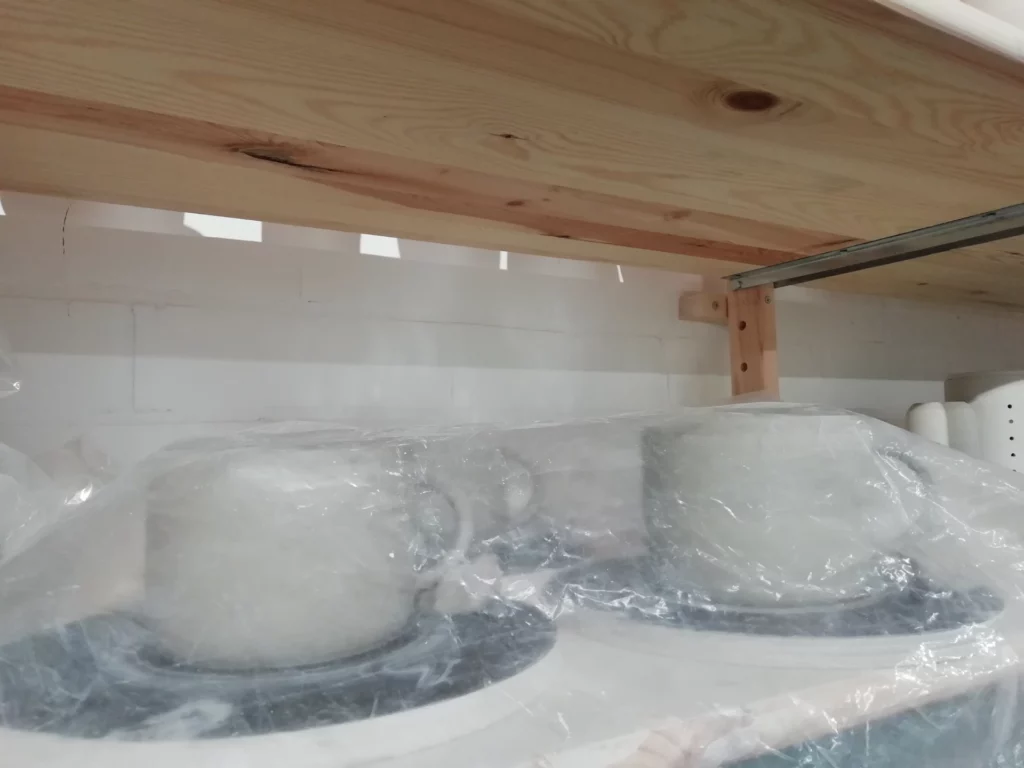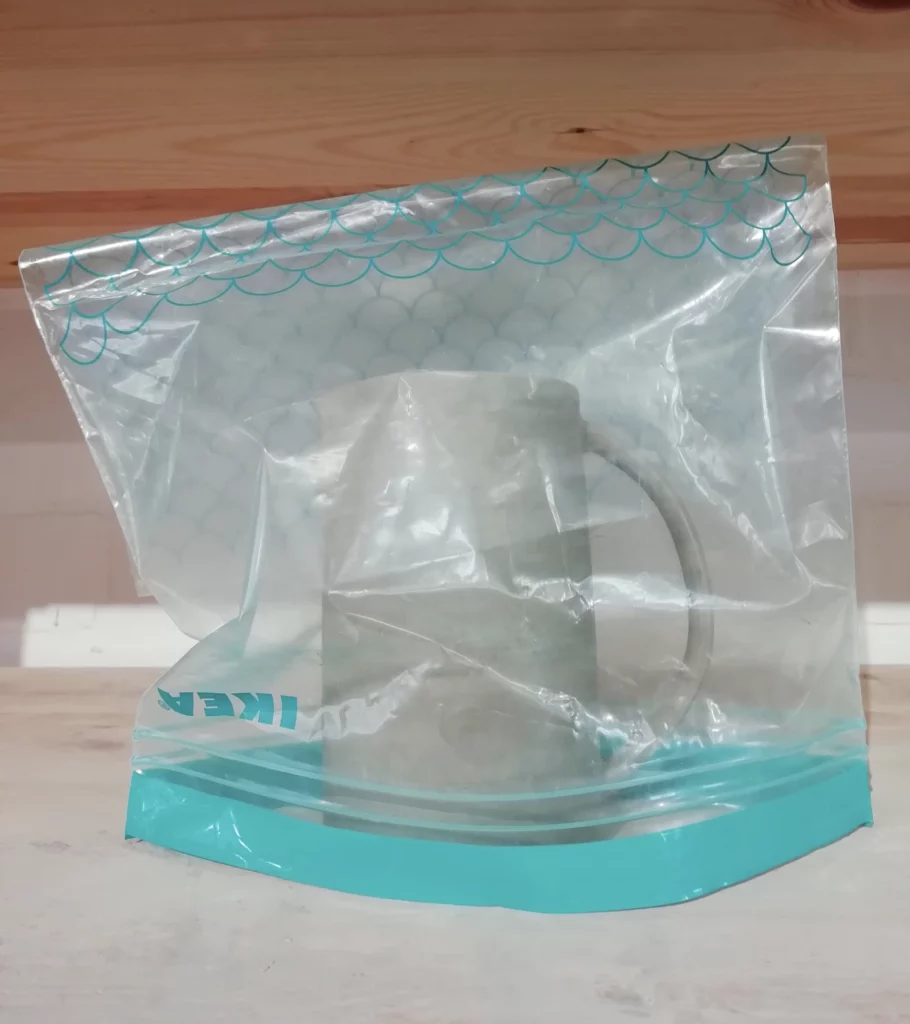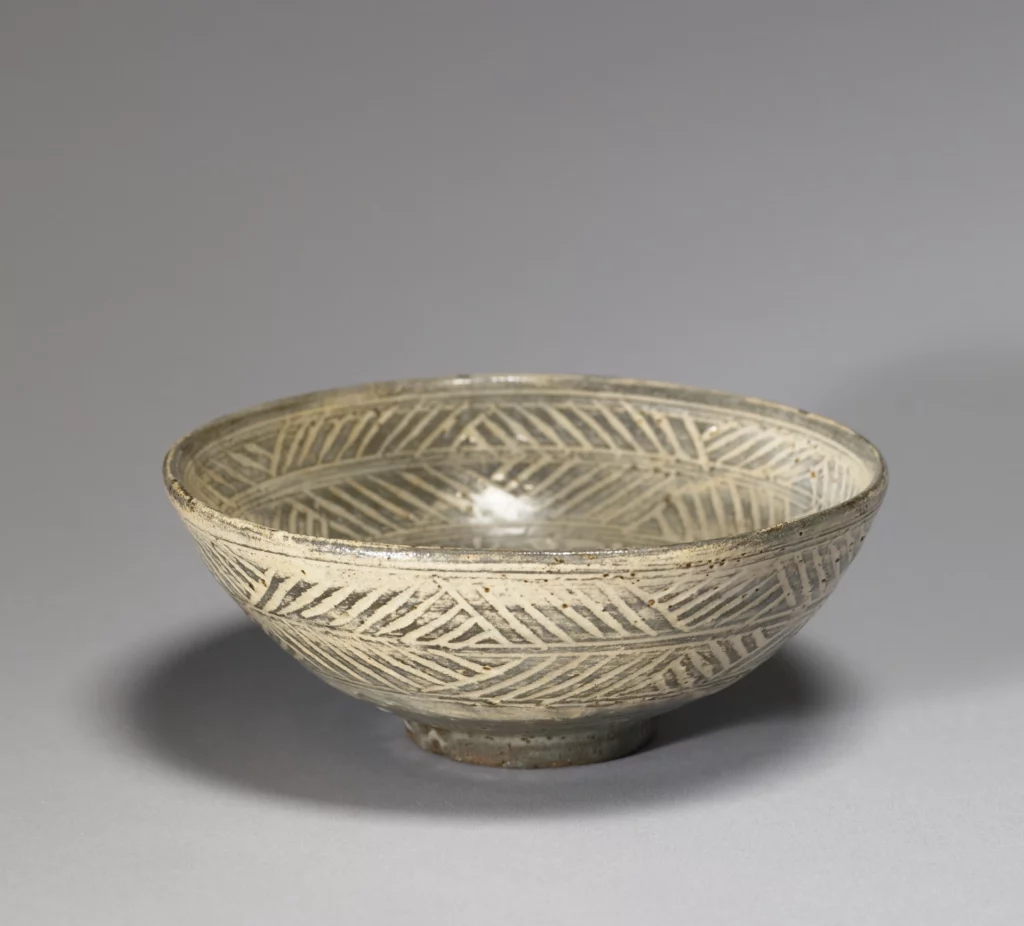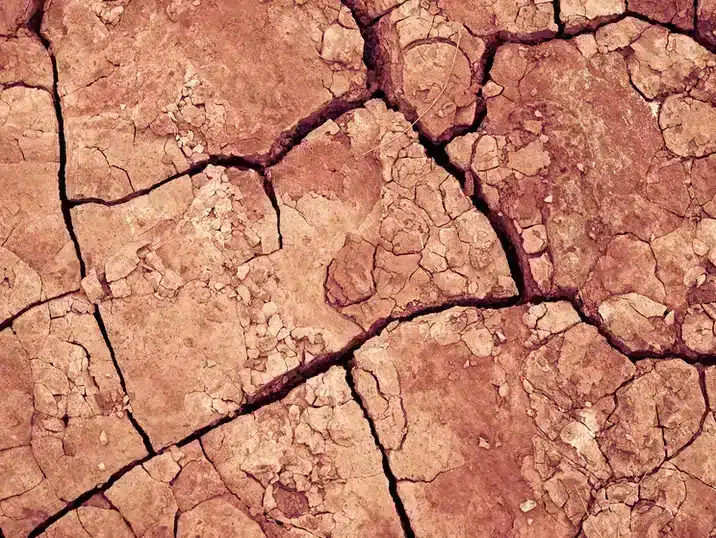Getting your work to the leather-hard stage is important for easy trimming, finishing and decorating. How long it takes for your clay to become leather-hard depends very much on the conditions of your space (heated or not), the season and weather conditions (hot, cold, dry or humid weather) and the type of clay (some clays dry very quickly, such as porcelain). Ideally, you want to let your pieces dry slowly and evenly. And sometimes you want to keep something leather-hard to finish it later. We list some tips.
Packing
To slow down the drying process, you can wrap your work.
- There are different types of plastic to wrap your pieces in:
- Thick black plastic: to wrap pieces that absolutely should not be allowed to dry further yet, for example because you want to shape them the next day. You can find thick black garbage bags at the supermarket or DIY store. Cut the bag open at the seams and that way you have a large piece of plastic.
- Thick clear plastic: Works the same as black plastic, but you can’t find it as easily. The advantage of this is mainly that you can better see which piece you have.
- Trash bags are light and ideal for lightly covering pieces. Slow drying is necessary for certain types of clay (some clays dry faster than others) and for certain shapes/pieces. Consider plates, mugs and cups with handles, the rim of a vase, etc.
- You can also keep plastic bags from clothes purchased online.
- For larger/higher pieces, it’s best to wrap the rim so it doesn’t dry out too much, and it doesn’t break while trimming.
- Freezer bags can be placed upside down over a piece, for a delicate piece such as a pitcher with a handle, for example. Do you often stay in a hotel? Collect the shower caps you find in the bathroom, as you can also easily place them over the top of a piece.
- To wrap, you can hold the plastic in place using clothespins or clips.


Other methods
- A large plastic container with a lid, then you don’t have the hassle of working with sheets of plastic. You can also put plaster slab in there. This method is ideal if you’re working with porcelain or want to keep a piece leather-hard to finish later. We have a free guide on how to make a plaster slab and damp box yourself.
- A broken refrigerator is an ideal place to store clay and drying pieces.
- Completely taping off a section of your rack with plastic has the same effect. This is an efficient and inexpensive way. There are also greenhouse racks, a rack with plastic around it, which you can open and close with a zipper.
Did it happen anyway? Is your piece too dry to finish properly? You can fix that, read how to do that here.







